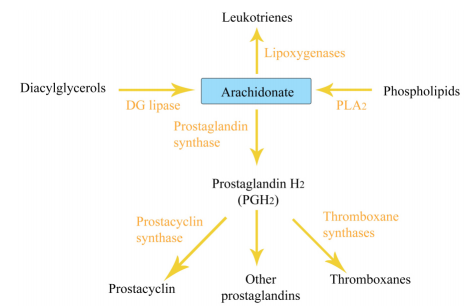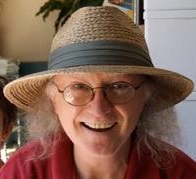6.10: Prostaglandin Synthesis
- Page ID
- 2997
The pathway for making prostaglandins is an extension of the fatty acid synthesis pathway (Figure 6.10.1). Prostaglandins, molecules associated with localized pain, are synthesized in cells from arachidonic acid (see previous page) which has been cleaved from membrane lipids. The enzyme catalyzing their synthesis is known as prostaglandin synthase, but is more commonly referred to as a cyclooxygenase (or COX) enzyme. Inhibition of the action of this enzyme is a strategy of non- steroidal pain relievers (also called NSAIDs), such as aspirin or ibuprofen. Inhibition of the release of arachidonic acid from membranes is the mechanism of action of steroidal anti-inffammatories, which inhibit the phospholipase \(\text{A}_2\)(\(\text{PLA}_2\)) that catalyzes the cleavage reaction.



